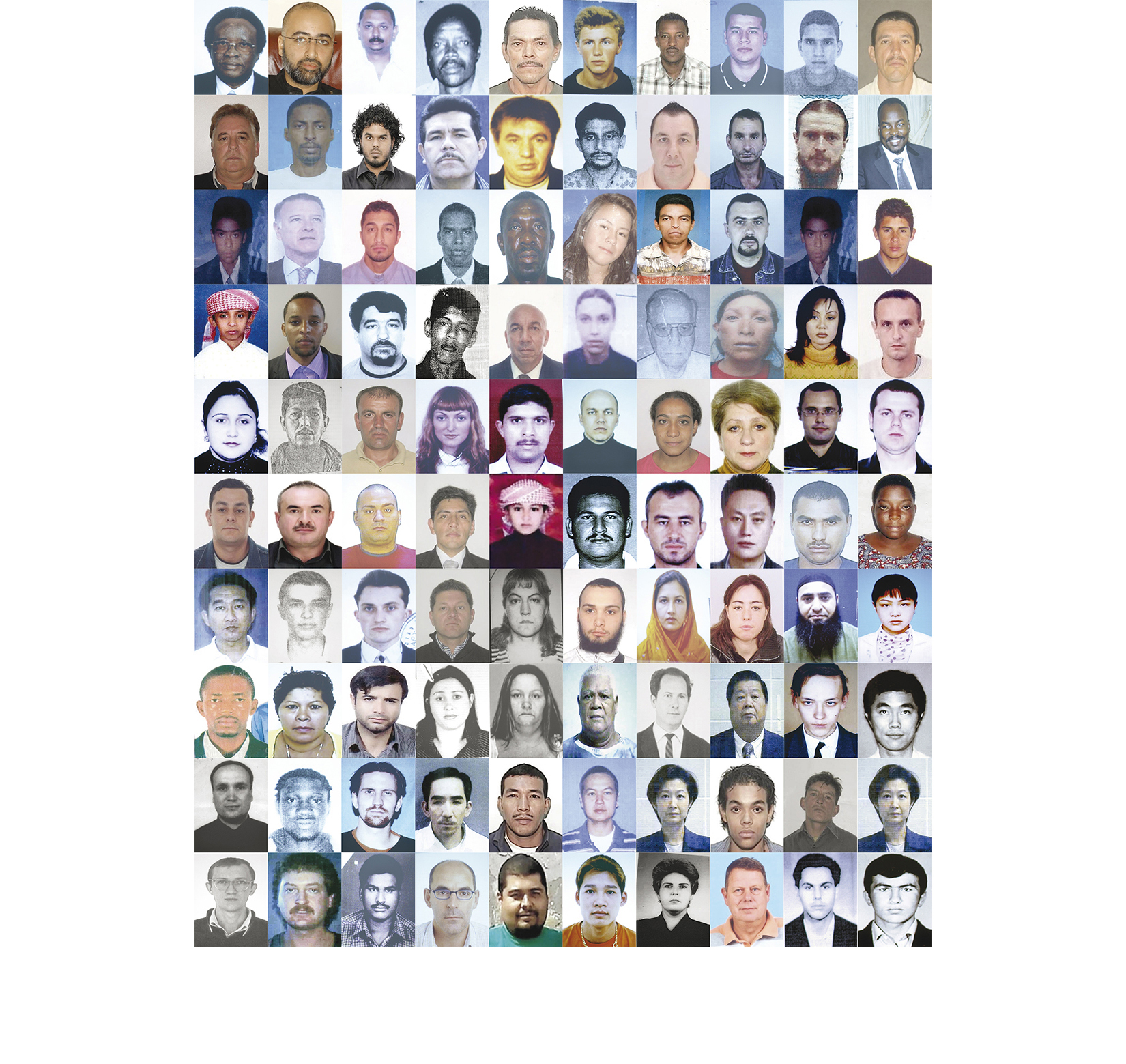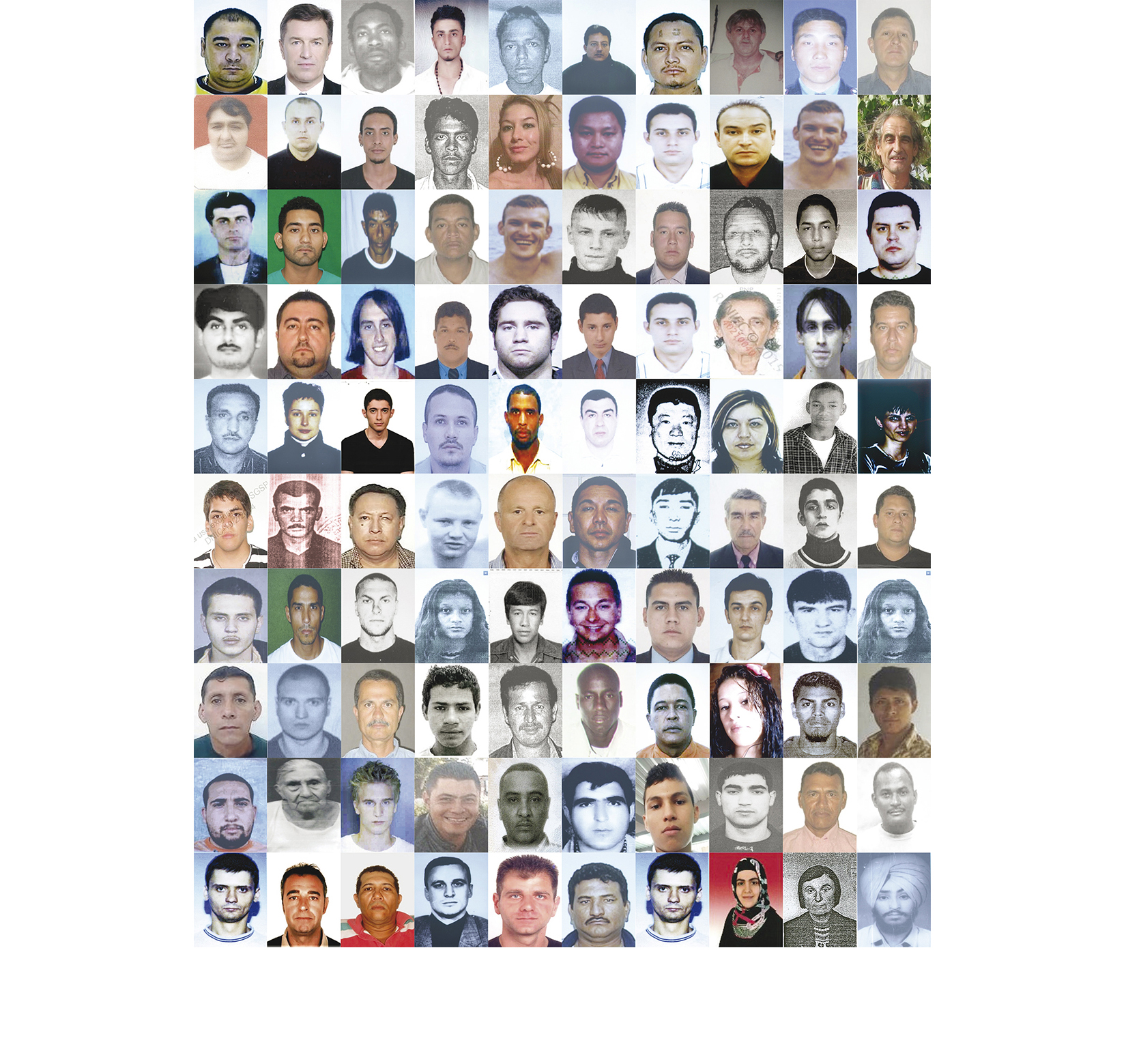Connecting police for a safer world / 2015
Vidéo (2min08) et tirages numériques, 70 x 100 cm. Work in progress
« Connecting police for a safer word » : tel est le slogan, la phrase d’accroche d’Interpol. Quand je travaillais sur la série d’images If you have any information, please contact us mon fils venait de naître. Je naviguais puis hackais des portraits classifiés Wanted mais ma curiosité me poussait à fouiller dans les portraits Missing. Les deux catégories, pour un jeune père étaient angoissantes. A la fin du 19ème siècle Cesare Lombroso, médecin italien, tente de dresser le portrait du mal. Il publie L'Homme criminel (L'Uomo delinquente). Ces études se basent principalement sur des signes extérieurs physiques : doigts de pied, nez, taille du crâne, couleur de peau… Ces résultats s’opposent aux conceptions sociologiques qui avancent que les déviances sont la conséquence du milieu. Le principe de mes images est binaire : je mélange les portraits des victimes et des criminels sur le même modèle que les planches réalisées par Lombroso. Est-ce que, si ces recherches étaient menées aujourd’hui, ces signes physiques distinctifs seraient les mêmes ?
Video (2min08) and digital prints, 70 x 100 cm. Work in progress
“Connecting police for a safer word” is Interpol’s slogan and catchphrase. When I was working on the series If you have any information, please contact us my son had just been born. I started browsing and then hacking the portraits on Interpol’s Wanted list. Then my curiosity drove me to snoop around the portraits in the Missing section. Both were anxiety inducing, especially for a young dad. At the end of the 19th century Cesare Lombroso, Italian doctor, tries to paint the portrait of the disease. He published The Criminal Man (L'Uomo delinquente). These studies are mainly based on external physical signs: toes, nose, size of the skull, skin color... These results are opposed to sociological conceptions which suggest that deviations are the consequence of the environment. The principle of my images is binary: I mix the portraits of victims and criminals on the same model as boards made by Lombroso. If this research was being carried out today, would these distinctive physical signs be the same?



